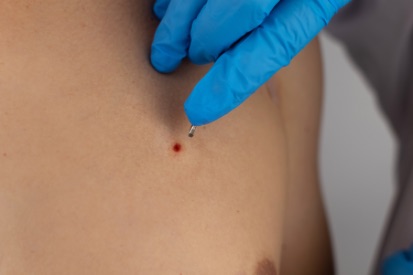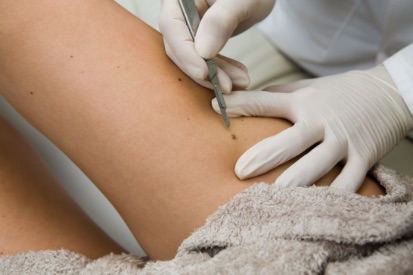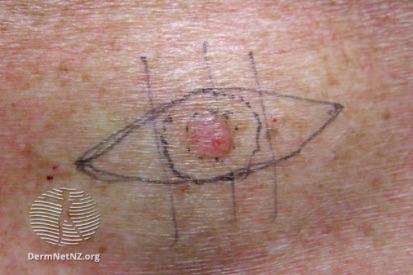Standard Excision
The Benefits of Standard Excision in Dermatology
A standard excision in dermatology is a precise surgical procedure used to remove skin lesions or abnormalities for both diagnostic and therapeutic purposes. This widely-used method is chosen by patients for various reasons, including the treatment of skin cancers, the removal of bothersome or potentially dangerous moles, and the resolution of cosmetic concerns that may affect appearance and self-esteem.
When opting for a standard excision, patients can expect a thorough and meticulous approach to addressing their dermatological issues. This procedure ensures the complete removal of the targeted lesion, significantly reducing the risk of recurrence and providing peace of mind. The versatility and efficiency of this method make it an ideal solution for a range of skin conditions, offering a straightforward treatment with clear objectives.
By choosing to undergo a standard excision, patients are taking proactive steps to enhance their skin health and overall well-being. This surgical approach not only eliminates physical discomfort and health risks associated with skin abnormalities but also has the potential to boost confidence and improve quality of life by removing unsightly or concerning lesions. Additionally, the procedure is often accompanied by a quick recovery, allowing patients to return to their daily activities with minimal disruption.
Examples of Standard Excision



Standard Excision Explained
Before the excision, patients typically undergo a consultation with the dermatologist, during which the need for the procedure is discussed, and any potential risks or benefits are explained. The dermatologist may recommend excision if a skin lesion raises concerns about malignancy, or if it causes discomfort or cosmetic issues.
Benefits of Standard Excision
How Pinehurst Dermatology & Mohs Surgery Center in North Carolina Can Help
After the surgery, the excised tissue is thoroughly examined in a lab to confirm that all abnormal cells have been completely removed. We also provide detailed post-operative care and support, addressing any questions or concerns you may have.
Trust Pinehurst Dermatology & Mohs Surgery Center for effective treatment and long-term skin health, knowing you are in skilled and capable hands.
Standard Excision FAQs
Your dermatologist may suggest a standard excision for several important reasons, including the treatment of skin cancers, the removal of bothersome moles, or to address cosmetic concerns. This procedure offers a comprehensive solution tailored to ensure both medical and aesthetic benefits.
Key Reasons for Recommendation:
Treatment of Skin Cancers:
- Complete Removal: Standard excision is often the preferred method for removing basal cell carcinoma, squamous cell carcinoma, and melanoma. The procedure ensures that the entire cancerous lesion is removed along with a margin of healthy tissue to reduce the risk of recurrence.
- Accurate Diagnosis: The excised tissue can be sent for histopathological examination, providing a precise diagnosis and helping to determine if further treatment is necessary.
Removal of Moles:
- Preventative Care: Moles that are atypical, changing in appearance, or causing discomfort can be removed to prevent potential malignancy.
- Relief from Discomfort: Moles that are irritated by clothing or regular activities can be excised to improve comfort and prevent further irritation.
Cosmetic Concerns:
- Aesthetic Improvement: For patients concerned about the appearance of moles, skin tags, or other benign growths, a standard excision can improve cosmetic appearance and boost self-confidence.
- Scar Management: The procedure is designed to minimize scarring and promote smooth, aesthetically pleasing results.
Benefits of Standard Excision:
- Comprehensive Care: This method ensures thorough removal of the lesion, addressing both medical and aesthetic needs.
- Minimized Recurrence: By removing the lesion with a margin of healthy tissue, the procedure significantly reduces the likelihood of recurrence.
- Enhanced Skin Health: Post-procedure, your dermatologist will provide care instructions to promote optimal healing and maintain skin health.
A standard excision is generally not painful during the procedure itself, as it is performed under local anesthesia. The dermatologist will inject an anesthetic to numb the area around the lesion, ensuring that the patient does not feel pain during the excision. Patients might feel some pressure or movement, but discomfort is typically minimal. The procedure is usually straightforward and quick, with the anesthesia taking effect almost immediately and lasting throughout the duration of the excision.
Post-procedure, some pain or discomfort is common as the anesthesia wears off. This can usually be managed with over-the-counter pain medications such as acetaminophen or ibuprofen. The level of post-operative pain varies depending on the size and location of the excision, individual pain tolerance, and how well the patient follows post-care instructions. Keeping the wound clean, dry, and protected can help minimize discomfort and promote healing. Most patients find that any pain decreases significantly within a few days and that the benefits of removing the lesion far outweigh the temporary discomfort associated with the procedure.
The duration of a standard excision procedure can vary depending on several factors, including the size and location of the lesion, the complexity of the case, and the patient's overall health. Generally, a standard excision takes about 30 minutes to an hour to complete. This time frame includes the preparation period, where the area is cleaned and numbed with a local anesthetic, the actual excision of the lesion, and the subsequent suturing of the wound. For larger or more complex excisions, or if multiple lesions are being removed, the procedure might take slightly longer.
After the excision, there is usually a short period for recovery and observation in the doctor's office to ensure there are no immediate complications, such as excessive bleeding. Patients are often able to go home the same day and resume most of their normal activities, with some restrictions on strenuous activities or stretching the excised area to facilitate proper healing. Follow-up appointments are typically scheduled to monitor the healing process and to remove sutures if necessary, which adds to the overall time commitment, but the actual procedure itself remains relatively brief.
After a standard excision, the removed tissue is usually sent to a laboratory for histopathological analysis. This analysis checks for the presence of cancerous cells and confirms whether the lesion has been fully removed. The pathology report provides detailed information about the tissue and guides any necessary follow-up treatment. Your dermatologist will discuss the results with you and outline the next steps for your care.
Yes, some scarring is likely after a standard excision. The extent of scarring depends on the size and location of the excision, as well as your skin type and healing process. During your consultation, your dermatologist will discuss potential scarring and how to minimize it. Proper surgical techniques, suturing methods, and post-operative care will help reduce visible scarring. Follow-up treatments may also be recommended to improve scar appearance.
Yes, there are alternatives. During your consultation, your dermatologist will discuss options based on your specific condition and individual factors.
Possible Alternatives:
- Cryotherapy: Freezing the lesion with liquid nitrogen.
- Laser Therapy: Using focused light to remove abnormal tissue.
- Topical Treatments: Applying creams or gels for pre-cancerous lesions and some skin cancers.
- Electrosurgery: Removing tissue with electric current.
- Mohs Surgery: Precise, layer-by-layer removal of cancerous tissue, often used for skin cancers in sensitive areas.
Your dermatologist will help determine the best treatment plan for you.
What to Expect at Your Standard Excision Appointment
Post-excision, the dermatologist closes the wound using sutures or other methods based on size and location, providing patients with post-operative care instructions, including wound cleanliness and activity restrictions during healing.
How to Prepare for Standard Excision
Planning for Standard Excision Recovery
We will work with you to ensure proper recovery and are happy to answer any questions you have.
Featured Products

Revision Gentle Foaming Cleanser
Revision Gentle Foaming Cleanser is a soap-free cleanser that comforts and moisturizes all skin types. 5 fl oz / 150 mL

Revision Intellishade Matte Tinted Moisturizer SPF 45
This award-winning five-in-one age-defying tinted moisturizer gives skin a touch of sheer, healthy color. Formulated with a blend of three peptides and broad-spectrum UVA and UVB protection, it’s the smart way to care for your skin. 1.7 oz
